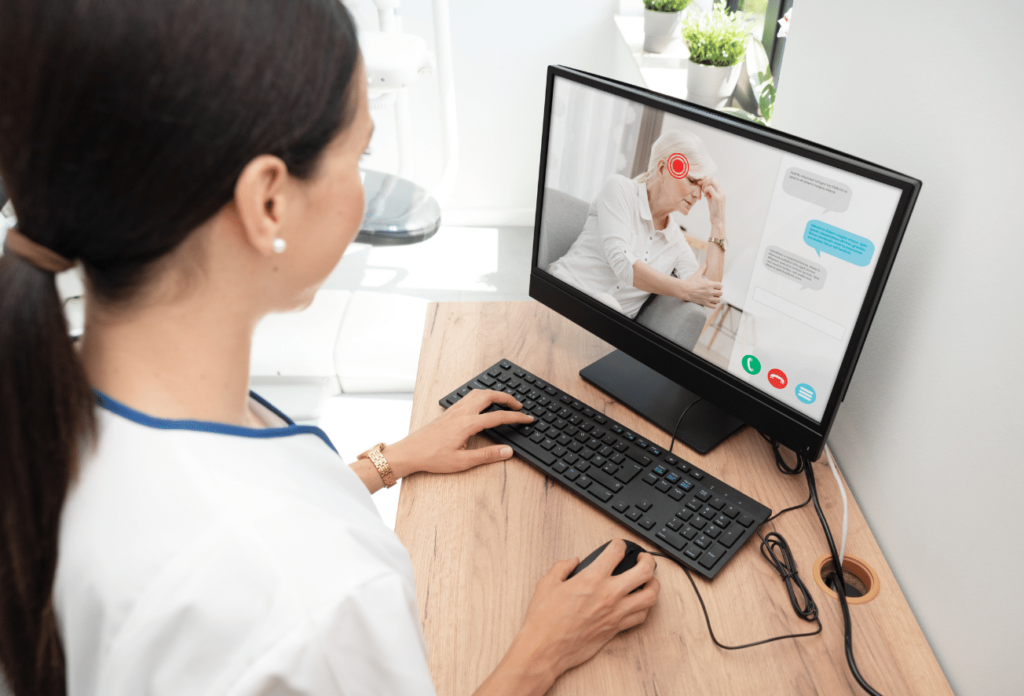New Study on Real-Time EHR Data and Telemedicine: Can Care Continuity Improve?
October 23rd, 2020
A new study on access to real-time EHR data and telemedicine indicates this capability can lead to more telehealth visits and greater care continuity.

Access to real-time data in any field supports better decision-making and outcomes. Healthcare is certainly a beneficiary here. However, data sharing and interoperability aren’t standard or consistent. What can happen when clinicians have real-time EHR data available?
A new study published in the American Journal of Managed Care provides interesting insights and connections between real-time data, telemedicine, and care continuity.
Telemedicine Is Surging
Telemedicine usage is experiencing an acceleration during the pandemic. CMS (Centers for Medicare and Medicaid Services) waived certain restrictions in response to COVID-19. A new report from HHS (U.S. Department of Health and Human Services) found that adoption increased for primary care visits by 50% during the first six months of 2020. With this option, can physicians better accommodate those with chronic diseases? That’s the crux of the study.
About the Study: EHR Data Exchange Can Improve Discharge Transitions
Researchers studied 241,510 hospital discharges in patients with diabetes. They examined the rate of outpatient follow-ups, telemedicine, lab tests, and return emergency department visits or readmissions.
They then compared the data available for the clinician—inpatient-outpatient or outpatient-only. In the former, physicians scheduled telemedicine follow-ups and ordered outpatient lab tests 27.5% of the time. If the latter, it was only 22.9% of the time.
The Study’s Commentary on EHR Data Exchange and Care Continuity for Chronic Diseases
Researchers concluded that real-time data availability during transitions coupled with telemedicine access, can shift the care delivery without any adverse effect on patient outcomes with chronic diseases. Further, the expansion of interoperability and EHR data exchange can significantly improve follow-up care efficiency.
Healthcare Data Exchange Still a Challenge
Many challenges around healthcare data sharing still exist, as there’s no standard across the industry. A concerted effort to improve interoperability has been ongoing by HHS and CMS with the new interoperability rule published this year. However, it’s seen delay due to the pandemic.
As the healthcare ecosystem works toward consistency around healthcare data exchange and interoperability, the goal of real-time data to fuel decision-making will only grow more critical. When clinicians have more data about a patient’s history, they can enhance continuity of care. Follow-ups don’t have to be in-person to be useful.
Telemedicine Is a Vital Tool in Care Continuity

This study, like many others, highlights the criticality of healthcare data sharing and interoperability. It also reflects that telemedicine is an effective alternative to in-office visits.
Telemedicine can be more convenient for patients with chronic illnesses. They may have limited mobility or be more susceptible to COVID-19. Those with diabetes and other chronic diseases are at increased risk of having more severe complications from COVID-19.
The CDC (Centers for Disease Control and Prevention) deemed telemedicine as an essential health service during COVID-19. They point to it as a way to reduce risk but also ensure that patients with chronic conditions continue to have regular visits to manage their illness and ensure medication adherence.
How Could Real-Time EHR Data Access Improve Your Organization’s Care Continuity?
Data sharing between EHRs, even within the same health system, can be complex. Additionally, there may be other health information systems (HIS) you’d like to integrate to improve decision-making and the quality of care.
Enabling interoperability or data sharing may not be a priority for your IT team, as they have a staggering amount of responsibilities. To bridge the gap and improve real-time data access, choose a data management partner like us to help!
Learn more about our data sharing capabilities today.